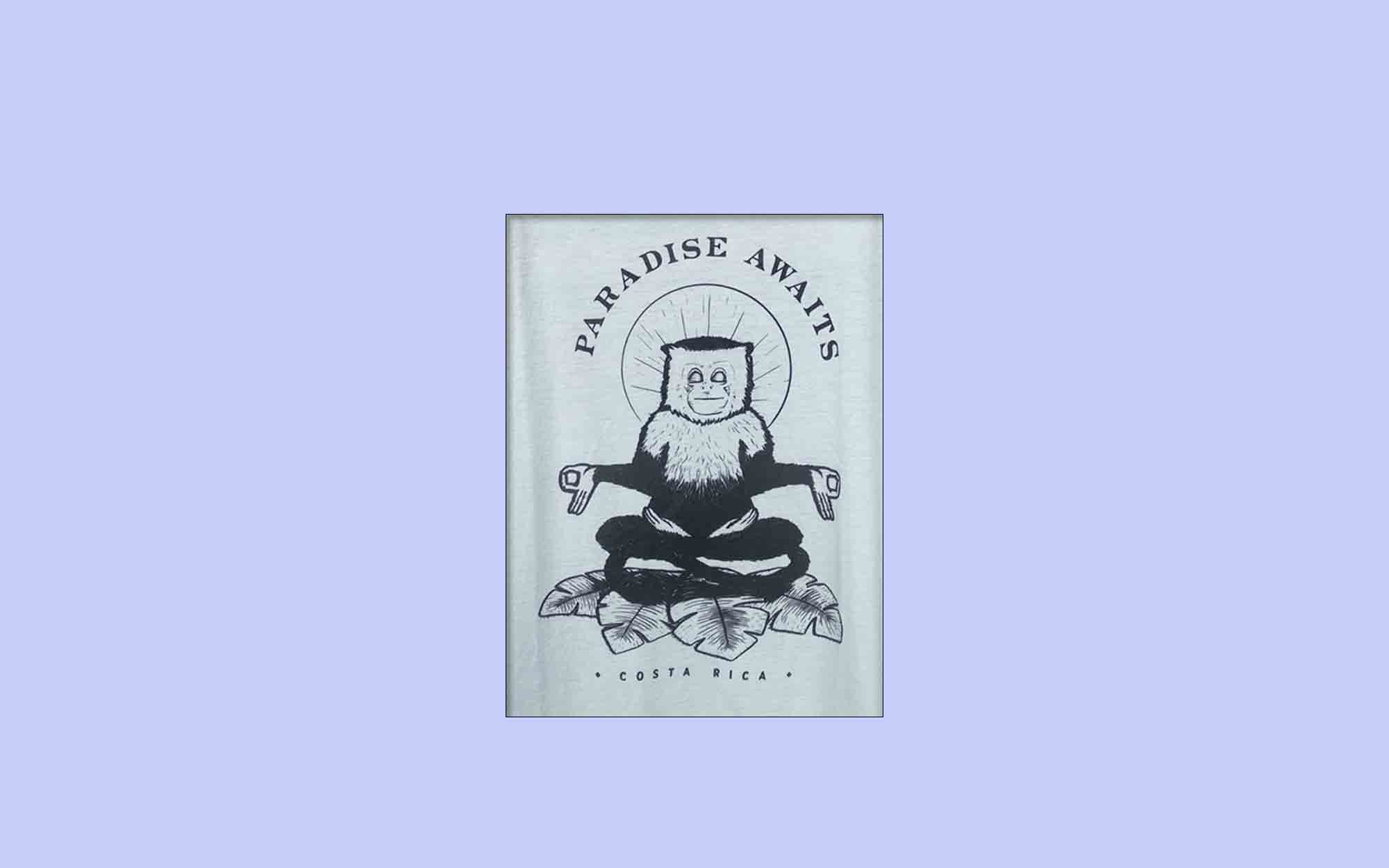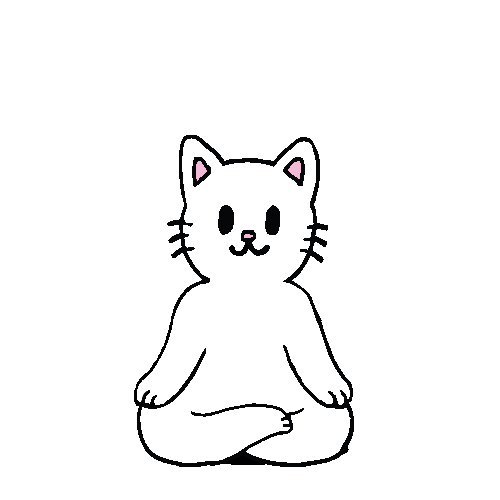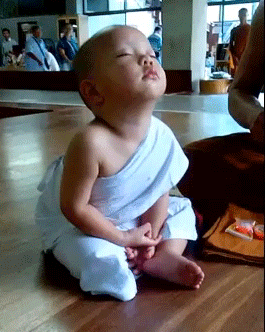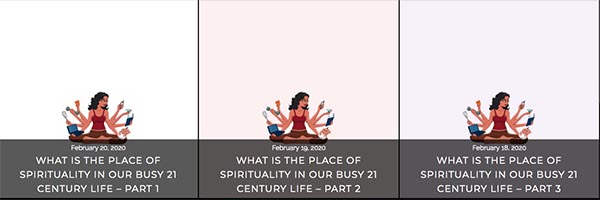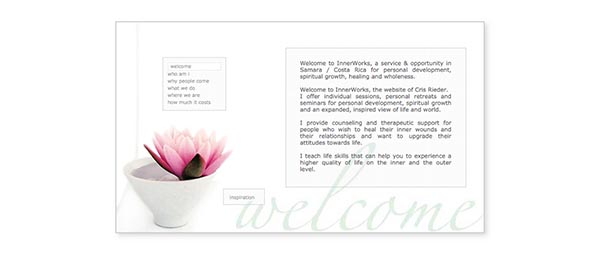How to meditate
Looks easy, right?
Meditación de Gato ; )
There are many “kinds” of meditation, stemming from many traditions, religious and cultural backgrounds. Some use objects to focus on, some use words (Mantras), some focus on qualities like Loving Kindness or the Impermanence of all Things. Or on a picture of Jesus, Mary or a statue of Buddha, Ganesh or some Tibetan deity.
And of course:
– The Breath –
For myself, i practice & teach what is called Vipassana, Pure Awareness Meditation. Supposedly taught by the Buddha before Buddhism became a religion.
Nowadays it is becoming very popular under the general name of Mindfulness Meditation. It works best for me, so maybe it can also do wonders for you ; )
It uses what you have with you all the time anyway.
Your body, the sensations, the emotions, the thoughts, the breath.
In a gentle and unforced way it uses all that to allow the restless mind to calm down, presence and awareness to increase and clarity to arise. It does not reject or attract sensations, feelings or thoughts. It does not have an agenda or a specific goal. It is not connected to some specific worldview or religious background.
It simply brings into focus That What Is. With increasing clarity. From moment to moment. The Flow-of-Life Phenomena that is constantly arising in your field of Awareness.
Over time and continuous practice a State of Pure Awareness develops and becomes your natural state. And this state does not evaporate when you get up from the meditation seat.
In a way, it is a very natural and essential thing – To Be.
Fully awake and aware in The Present Moment of Now.
In this manner flowing naturally from Now to Now.
– The Flow –
Only beneficial things come from such a state, with healthy influence on all aspects of life.
But of course, such a state is also very different from what most of us people experience most of the time when it comes to the state of our mind.
Our mind is usually experienced as a big, half conscious jumble of habits, needs, impulses, reactions, moods, emotions, feelings, thoughts, beliefs and the rest.
Most of us never find the time, the skill and the will to sort it all out and understand how we actually function and what is driving us thru our days.
A certain kind of Counseling may help with that, with helping to become increasingly aware of what is going on within our mind. Of course, if you are lucky to find a clearheaded counselor.
But in my experience, the kind of Mindfulness Meditation that i describe here ultimately really does the trick! (at least it does it for me ; )
There is of course much more to say about the the benefits of meditation, the brain science behind it and about more specific details of the practice, but i want to keep it simple here, short & sweet.
In case you are interested in more, feel free to contact me with specific questions or we can arrange a session in person or on Zoom >> [email protected]
So now, without further ado, here is:
The Practice of Mindfulness Meditation
A beginner’s steps to Vipassana
Getting ready:
1 – Find your place to sit down comfortably, relaxed but keeping a straight back.
In the beginning it is helpful to have Your Place specifically designated for your meditation practice.
Your pillow, your chair, your blanket …
This has an effect like muscle memory for your mind ; )
2 – Make sure you will be left undisturbed during your meditation.
Ask your housemates to be more quiet, switch off your mobile phone, feed your dog …
3 – Have some kind of timer with a soft wake up tone.
Something minimalistic like >> that for Android: Meditation Timer – Apps on Google Play, or for iPhone: Simple Meditation Timer – on the App Store.
Recommended duration for the meditation: 10 minutes in the beginning, 20 minutes when you already more used to the routine.
Tuning-in:
1 – Settle into your seat.
Relax into your sitting position.
Take 5 deep breaths, breathing in through the nose and out through the mouth and then gently close your eyes.
2 – Focus on the physical sensation of your body on the chair (if you are sitting one one : ) and your feet on the floor.
Or the feeling of your butt on the cushion and your legs on the floor.
3 – Scan down through the body and notice which parts feel comfortable and relaxed, and which parts feel uncomfortable and tense.
4 – Notice how/what you are feeling.
What sort of mood you are in right now, what kinds of emotions are present right now.
Just noticing, acknowledging, not thinking about them.
Focusing the mind:
1 – Notice where in your body you feel the rising and falling sensation of the breath most strongly.
2 – Notice how each breath feels, the rhythm of it – whether it’s long or short, deep or shallow, rough or smooth.
Let it flow naturally, no need to change it of force it.
3 – Stay with the awareness of your breath, the intreat, the out breath, the short gap between those.
Probably after a while you will find yourself lost in some thoughts or even dozing away unconsciously.
No problem. No commenting!
Gently bring your focus back to your breath and continue to feel the breath.
You will learn to simply observe or witness the comings and goings of thoughts, sensations, feelings and impulses.
Like images on a TV screen.
You acknowledge them, no comment of judgement on anything that arises.
No identifying and following those impulses/thoughts either (thats the hard one).
In the beginning stages of your meditation it might help your focus to gently count the breaths as you focus on the rising and falling of the breath – 1 with the rise and 2 with the fall, upwards to a count of 10. And repeat.
Some people have success with that to train the focus-muscle.
😀
Tuning-out:
1 – Let go of any focus at all, allowing the mind to be as busy or as still as it wants to be for a minute or two.
Observe whats going on your field of awareness.
Notice the change of your state (compared to before this meditation)
2 – Bring the mind back to the sensation of the body on the chair and your feet on the floor.
3 – Gently open your eyes and stand up when you feel ready.
Make up your mind about what you will do next, a little plan to ground you in your everyday reality.
Get up slowly and consciously to avoid dizziness.
Stretch your body like a cat.
Early mornings and evenings are mostly recommended for meditation.
TuningIn for the day and TuningOut into the DreamTime.
But really, any time for Meditation is the best time.
Hope you will develop a taste for it : )
You are welcomed to contact me if you wish to get serious & want some tutoring
>> [email protected]
In case you are interested in my general approach towards Spirituality, i recommend to read the 3-part series on this blog about:
“What is the place of Spirituality in our busy busy 21.Century Life
And check my InnerWorks Website:
www.crisrieder.org/innerworks/
Thanks for your interest & curiosity : )

